linux性能监控分析及通过nmon_analyse生成分析报表
nmon是一款分析 AIX 和 Linux 性能的免费工具
nmon 工具还可以将相同的数据捕获到一个文本文件,便于以后对报告进行分析和绘制图形。输出文件采用电子表格的格式 (.csv)。
性能介绍
nmon 工具可以为 AIX 和 Linux 性能专家提供监视和分析性能数据的功能,其中包括:
- CPU 使用率
- 内存使用情况
- 内核统计信息和运行队列信息
- 磁盘 I/O 速度、传输和读/写比率
- 文件系统中的可用空间
- 磁盘适配器
- 网络 I/O 速度、传输和读/写比率
- 页面空间和页面速度
- CPU 和 AIX 规范
- 消耗资源最多的进程
- IBM HTTP Web 缓存
- 用户自定义的磁盘组
- 计算机详细信息和资源
- 异步 I/O,仅适用于 AIX
- 工作负载管理器 (WLM),仅适用于 AIX
- IBM TotalStorage® Enterprise Storage Server® (ESS) 磁盘,仅适用于 AIX
- 网络文件系统 (NFS)
- 动态 LPAR (DLPAR) 更改,仅适用于面向 AIX 或 Linux 的 pSeries p5 和 OpenPower
还包括一个用来从 nmon 的输出生成图形并创建可以在 Web 站点显示的 .gif文件的新工具。
工具运行
安装
- 将 nmonXXX.tar.Z 文件复制到计算机。如果使用 FTP,请记住使用二进制模式。注意:示例中的 XXX 由实际的版本代替。
- 要解压该文件,可以运行 uncompress nmonXX.tar.Z。
- 要提取该文件,可以运行 tar xvf nmonXX.tar。
- 阅读自述文件。
- 要启动 nmon 工具,输入 nmon。
- 如果您是 root 用户,可能需要输入 ./nmon。
下面介绍下安装工具步骤,其实安装还是挺方便挺简单的

[root@lamw /home/lam7/nmon]# ls
nmon16d_x86.tar.gz nmon_analyser_v51_2.zip
将下载的 nmon16d_x86.tar.gz 解压
[root@lamw /home/lam7/nmon]# tar -xzvf nmon16d_x86.tar.gz

然后会到解压出来好多类型不同平台的二进制nmon,笔者这里的系统是nmon_x86_64_centos6,所以给nmon_x86_64_centos6文件执行权限
找到对应的linux版本
不知道版本的可以输入
[root@lamw /root]# lsb_release -a 查看版本

[root@lamw /home/lam7/nmon]# chmod u+x nmon_x86_64_centos6
笔者这边把 nmon_x86_64_centos6 文件名称改成“nmon”了方便后续执行 (PS:如果不改文件名称可以直接 ./nmon_x86_64_centos6去执行)
然后就可以用 ./nmon去执行了
[root@lamw /home/lam7/nmon]# ./nmon
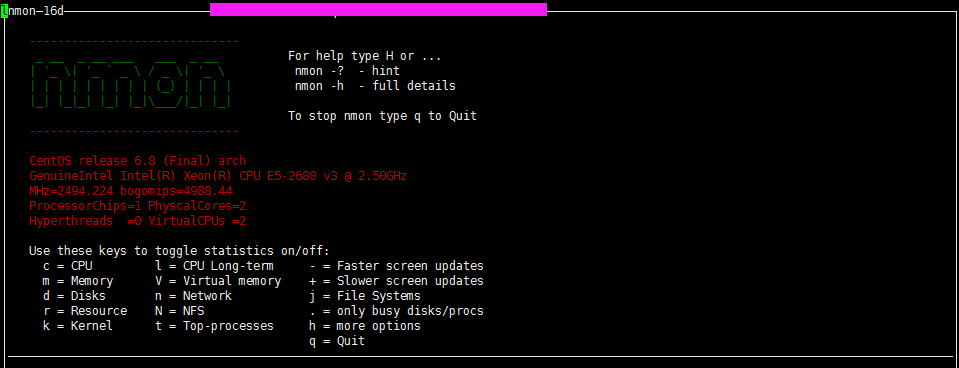
nmon是个交互式程序,当我们执行nmon的时候会出现一个交互窗口,我们执行相关的命令就会出现相关的信息。
比如这里我按c,就会显示cpu的相关信息

根据自己需要监控的数据直接输入相关信息即可,按H 可以查看对应的命令帮助解释
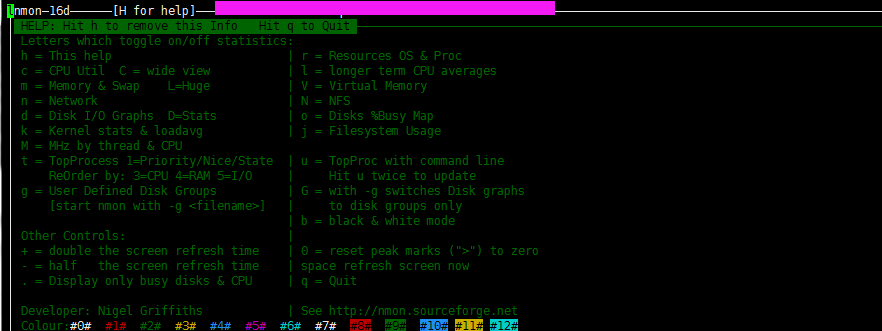
按q键,退出显示,其实就是这么简单。
下面通过nmon_analyse生成分析报表
nmon -h 可以查看帮助信息
Hint for nmon version 16d
Full Help Info : nmon -h On-screen Stats: nmon
Data Collection: nmon -f [-s <seconds>] [-c <count>] [-t|-T]
Capacity Plan : nmon -x
Interactive-Mode:
Read the Welcome screen & at any time type: "h" for more help
Type "q" to exit nmon For Data-Collect-Mode
-f Must be the first option on the line (switches off interactive mode)
Saves data to a CSV Spreadsheet format .nmon file in then local directory
Note: -f sets a defaults -s300 -c288 which you can then modify
Further Data Collection Options:
-s <seconds> time between data snapshots
-c <count> of snapshots before exiting
-t Includes Top Processes stats (-T also collects command arguments)
-x Capacity Planning=15 min snapshots for 1 day. (nmon -ft -s 900 -c 96)
---- End of Hints
---- Full Help Information for nmon 16d For Interactive and Data Collection Mode:
User Defined Disk Groups (DG) - This works in both modes
It is a work around Linux issues, where disks & partitions are mixed up in /proc files
& drive driver developers use bizarre device names, making it trick to separate them.
-g <filename> Use this file to define the groups
- On each line: group-name <disks-list> (space separated list)
- Example line: database sdb sdc sdd sde
- Up to 64 disk groups, 512 disks per line
- Disks names can appear more than one group
-g auto - Will generate a file called "auto" with just disks from "lsblk|grep disk" output
For Interactive use define the groups then type: g or G
For Data Capture defining the groups switches on data collection Data-Collect-Mode = spreadsheet format (i.e. comma separated values)
Note: Use only one of f, F, R, x, X or z to switch on Data Collection mode
Note: Make it the first argument then use other options to modify the defaults
Note: Don't collect data that you don't want - it just makes the files too large
Note: Too many snapshots = too much data and crashes Analyser and other tools
Note: 500 to 800 snapshots make a good graph on a normal size screen
Recommended normal minimal options: snapshots every 2 minutes all day:
Simple capture: nmon -f -s 120 -c 720
With Top Procs: nmon -fT -s 120 -c 720
Set the directory: nmon -fT -s 120 -c 720 -m /home/nag/nmon
Capture a busy hour: nmon -fT -s 5 -c 720 -m /home/nag/nmon For Data-Collect-Mode Options
-f spreadsheet output format [note: default -s300 -c288]
output file is <hostname>_YYYYMMDD_HHMM.nmon
-F <filename> same as -f but user supplied filename
Not recommended as the default file name is perfect
The other options in alphabetical order:
-a Include Accelerator GPU stats
-b Online only: for black and white mode (switch off colour)
-c <number> The number of snapshots before nmon stops
-d <disks> To set the maximum number of disks [default 256]
Ignores disks if the systems has 100's of disk or the config is odd!
-D Use with -g to add the Disk Wait/Service Time & in-flight stats
-f and -F See above
-g <filename> User Defined Disk Groups (see above) - Data Capture: Generates BBBG & DG lines
-g auto See above but makes the file "auto" for you of just the disks like sda etc.
-h This help output
-I <percent> Set the ignore process & disks busy threshold (default 0.1%)
Don't save or show proc/disk using less than this percent
-l <dpl> Disks per line in data capture to avoid spreadsheet width issues. Default 150. EMC=64.
-m <directory> nmon changes to this directory before saving to file
Useful when starting nmon via cron
-M Adds MHz stats for each CPU thread. Some POWER8 model CPU cores can be different frequencies
-N Include NFS Network File System for V2, V3 and V4
-p nmon outputs the PID when it starts. Useful in scripts to capture the PID for a later safe stop.
-r <runname> Use in a benchmark to record the run details for later analysis [default hostname]
-R Old rrdtool format used by some - may be removed in the future. If you use this email Nigel
-s <seconds> Time between snap shots - with "-c count" decides duration of the data capture
-t Include Top Processes in the output
-T As -t plus it saves command line arguments in UARG section
-U Include the Linux 10 CPU utilisation stats (CPUUTIL lines in the file)
-V Print nmon version & exit immediately To manually load nmon files into a spreadsheet:
sort -A *nmon >stats.csv
Transfer the stats.csv file to your PC
Start spreadsheet & then Open with type=comma-separated-value ASCII file
This puts every datum in a different cell
Now select the data of one type (same 1st column) and graph it
The nmon Analyser & other tools do not need the file sorted. Capacity Planning mode - use cron to run each day
-x Sensible spreadsheet output for one day
Every 15 mins for 1 day ( i.e. -ft -s 900 -c 96)
-X Sensible spreadsheet output for busy hour
Every 30 secs for 1 hour ( i.e. -ft -s 30 -c 120)
-z Like -x but the output saved in /var/perf/tmp assuming root user Interactive Mode Keys in Alphabetical Order
Start nmon then type the letters below to switch on & off particular stats
The stats are always in the same order on-screen
To see more stats: make the font smaller or use two windows Key --- Toggles on off to control what is displayed ---
b = Black and white mode (or use -b command line option)
c = CPU Utilisation stats with bar graphs (CPU core threads)
C = CPU Utilisation as above but concise wide view (up to 192 CPUs)
d = Disk I/O Busy% & Graphs of Read and Write KB/s
D = Disk I/O Numbers including Transfers, Average Block Size & Peaks (type: 0 to reset)
g = User Defined Disk Groups (assumes -g <file> when starting nmon)
G = Change Disk stats (d) to just disks (assumes -g auto when starting nmon)
h = This help information
j = File Systems including Journal File Systems
k = Kernel stats Run Queue, context-switch, fork, Load Average & Uptime
l = Long term Total CPU (over 75 snapshots) via bar graphs
L = Large and =Huge memory page stats
m = Memory & Swap stats
M = MHz for machines with variable frequency 1st=Threads 2nd=Cores 3=Graphs
n = Network stats & errors (if no errors it disappears)
N = NFS - Network File System
1st NFS V2 & V3, 2nd=NFS4-Client & 3rd=NFS4-Server
o = Disk I/O Map (one character per disk pixels showing how busy it is)
Particularly good if you have 100's of disks
q = Quit
r = Resources: Machine type, name, cache details & OS version & Distro + LPAR
t = Top Processes: select the data & order 1=Basic, 3=Perf 4=Size 5=I/O=root only
u = Top Process with command line details
U = CPU utilisation stats - all 10 Linux stats:
user, user_nice, system, idle, iowait, irq, softirq, steal, guest, guest_nice
v = Experimental Verbose mode - tries to make recommendations
V = Virtual Memory stats Key --- Other Interactive Controls ---
+ = Double the screen refresh time
- = Halves the screen refresh time
0 = Reset peak counts to zero (peak highlight with ">")
1 = Top Processes mode 1 Nice, Priority, Status
3 = Top Processes mode 3 CPU, Memory, Faults
4 = Top Processes mode 4 as 3 but order by memory
5 = Top Processes mode 5 as 3 but order by I/O (if root user)
6 = Highlights 60% row on Long Term CPU view
7 = Highlights 70% row on Long Term CPU view
8 = Highlights 80% row on Long Term CPU view
9 = Highlights 90% row on Long Term CPU view
. = Minimum mode i.e. only busy disks and processes shown
space = Refresh screen now Interactive Start-up Control
If you find you always type the same toggles every time you start
then place them in the NMON shell variable. For example:
export NMON=cmdrtn Other items for Interactive and Data Collection mode:
a) To limit the processes nmon lists (online and to a file)
either set NMONCMD0 to NMONCMD63 to the program names
or use -C cmd:cmd:cmd etc. example: -C ksh:vi:syncd
Other items for Data Collection mode:
b) To you want to stop nmon use: kill -USR2 <nmon-pid>
c) Use -p and nmon outputs the background process pid
d) If you want to pipe nmon output to other commands use a FIFO:
mkfifo /tmp/mypipe
nmon -F /tmp/mypipe &
tail -f /tmp/mypipe
e) If nmon fails please report it with:
1) nmon version like: 16d
2) the output of: cd /proc; cat cpuinfo meminfo partitions stat vmstat
3) some clue of what you were doing
4) I may ask you to run the debug version or collect data files
f) If box & line characters are letters then check: terminal emulator & $TERM
g) External Data Collectors - nmon will execute a command or script at each snapshot time
They must output to a different file which is merge afterwards with the nmon output
Set the following shell variables:
NMON_START = script to generate CVS Header test line explaining the columns
Generate: TabName,DataDescription,Column_name_and_units,Column_name_and_units ...
NMON_SNAP = script for each snapshots data, the parameter is the T0000 snapshot number
Generate: TabName,T00NN,Data,Data,Data ...
NMON_END = script to clean up or finalise the data
NMON_ONE_IN = call NMON_START less often (if it is heavy in CPU terms)
Once capture done: cat nmon-file data-file >merged-file ; ready for Analyser or other tools
The nmon Analyser will automatically do its best to graph the data on a new Tab sheet Developer: Nigel Griffiths See http://nmon.sourceforge.net
Feedback welcome - On the current release only
No warranty given or implied. Copyright GPLv3
运行带 -f 标志的 nmon 命令。
nmon -f -s 30 -c 100
[root@lamw /home/lam7/nmon]# nmon -f -s 36 -c 100
-f 表示生成的数据文件名中有时间;
-t 输出中包括占用率较高的进程;
-s 36 表示每 36 秒采集一次数据;
-c 100 表示采集 100 次,36s*100=3600秒;
采集60分钟数据,这样运行一次这个程序就会生成一个采集 60分钟数据的文件。该行命令将在当前目录中创建输出文件,其名称为:<hostname>_date_time.nmon", hostname" 是这台主机的主机名。
在采集当中也可以通过命令
ps -ef | grep nmon 查看采集数据的进程
[root@lamw /home/lam7/nmon]# ps -ef | grep nmon
60分钟后 再次执行 此命令可以发现 进程已结束
在我们当前目录下可以查看到 以 ****_170323_1102.nmon 命名的文件 “***”为主机名称
我们通过more命令后发现都是我们看不懂的一些文本,这就需要我们把其转化成我们能看懂的excel格式的文件。首先我们把****_170323_1102.nmon文件导出到我们的windows本地。然后通过nmon Analyser 去生成报告CSV文件
下载安装 nmon Analyser
https://www.ibm.com/developerworks/community/wikis/home?lang=en#!/wiki/Power+Systems/page/nmon_analyser
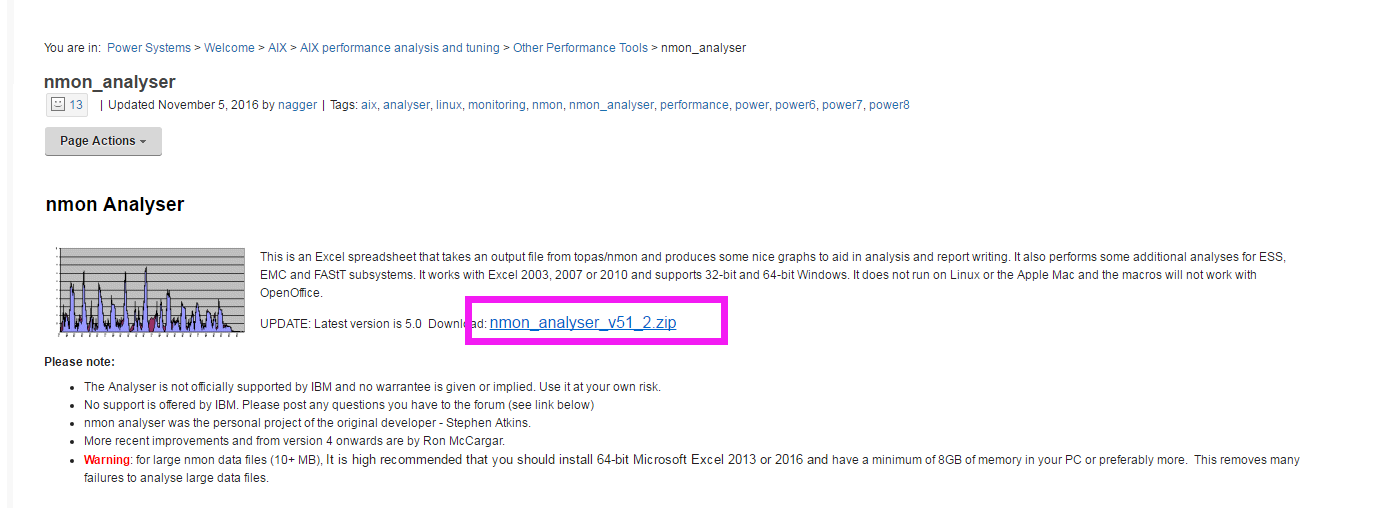
下载解压后 发现 一个是NA_UserGuide v51_2.docx的说明word格式的说明文档,另一个是nmon analyser v51_2.xlsm格式的nmon analyse文件。
打开nmon analyser v51_2.xlsm 导入从linux中导出的 ****_170323_1102.nmon文件,生成报告excel文档
如果是用WPS打开nmon analyser v51_2.xlsm的,会提示安装 宏 ,wps是不带宏的,安装 宏 之后 调整Excel宏安全性:工具--宏--安全性----低
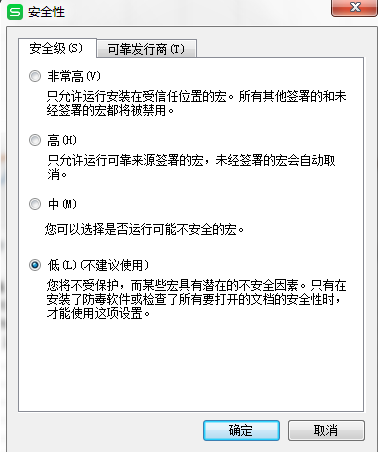
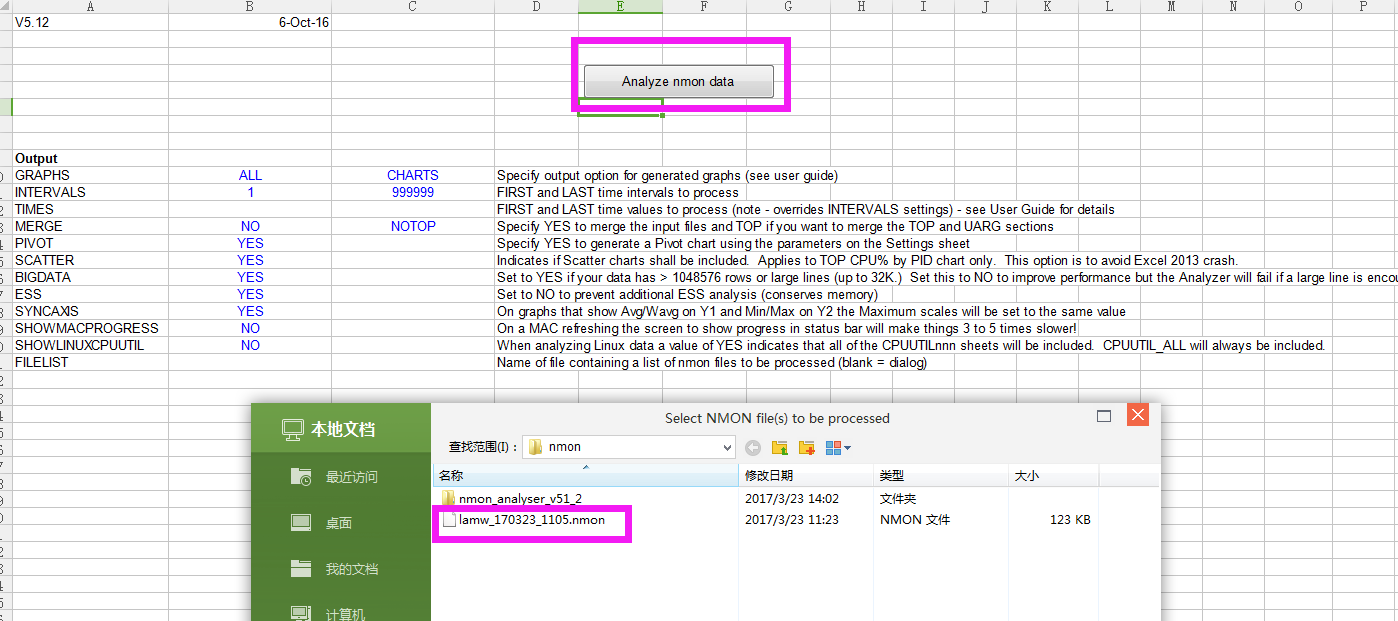
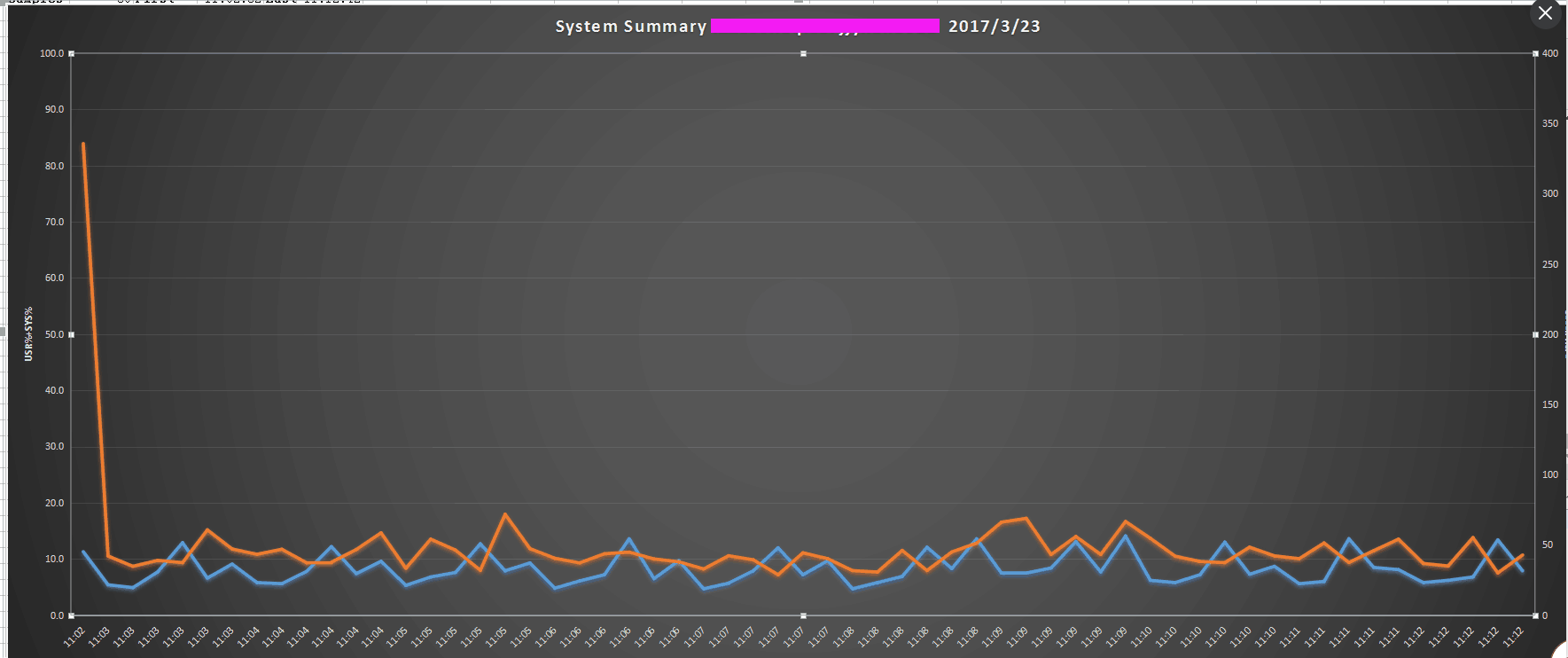

可以切换 展示的图片格式 查看所监控的数据信息
橙色 :系列"IO/sec"
蓝色 : 系列"CPU%"
linux性能监控分析及通过nmon_analyse生成分析报表的更多相关文章
- 【转载】linux性能监控分析及通过nmon_analyse生成分析报表
转载地址:http://www.cnblogs.com/Lam7/p/6604832.html nmon是一款分析 AIX 和 Linux 性能的免费工具 nmon 工具还可以将相同的数据捕获到一个文 ...
- Linux性能监控与分析之--- CPU
Linux性能监控与分析之--- CPU 望月成三人关注 2016.07.25 18:16:12字数 1,576阅读 2,837 CPU性能指标 用户进程使用CPU的比率 系统进程使用CPU的比率 W ...
- Linux性能监控
转自:http://blog.csdn.net/chosen0ne/article/details/8200737 linux性能监控,就是要监控系统的各个子系统是否正常.linux主要的子系统包括: ...
- Linux 性能监控之CPU&内存&I/O监控Shell脚本2
Linux 性能监控之CPU&内存&I/O监控Shell脚本2 by:授客 QQ:1033553122 思路: 捕获数据->停止捕获数据->提取数据 备注:一些命令的输 ...
- Linux 性能监控之CPU&内存&I/O监控Shell脚本1
Linux 性能监控之CPU&内存&I/O监控Shell脚本1 by:授客 QQ:1033553122 #!/bin/bash # 获取要监控的本地服务器IP地址 IP=`if ...
- linux性能监控 -CPU、Memory、IO、Network等指标的讲解
[操作系统-linux]linux性能监控 -CPU.Memory.IO.Network等指标的讲解(转) 一.CPU 1.良好状态指标 CPU利用率:User Time <= 70%,Syst ...
- Linux性能监控分析命令(五)—free命令介绍
性能监控分析的命令包括如下:1.vmstat2.sar3.iostat4.top5.free6.uptime7.netstat8.ps9.strace10.lsof 命令介绍:free命令是监控Lin ...
- Linux性能监控分析命令(四)—top命令介绍
性能监控分析的命令包括如下: 1.vmstat 2.sar 3.iostat 4.top 5.free 6.uptime 7.netstat 8.ps 9.strace 10.lsof ======= ...
- Linux性能监控分析命令(二)—sar命令介绍
性能监控分析的命令包括如下: 1.vmstat 2.sar 3.iostat 4.top 5.free 6.uptime 7.netstat 8.ps 9.strace 10.lsof ======= ...
随机推荐
- 蓝桥网试题 java 基础练习 十六进制转八进制
- -------------------------------------------------------------------------------------------------- ...
- 很傻很二很简单的一个问题,json键值为变量如何取值
js里的json的键值是变量的话,那么传统的做法似乎不管用了. 例如: var json={'a':'123','b':'999'} json.a得到123,如果a用变量表示呢,有笨法for循环 ...
- POJ 1308 Is It A Tree?--题解报告
Is It A Tree? Time Limit: 1000MS Memory Limit: 10000K Total Submissions: 31092 Accepted: 10549 D ...
- list、set、map以及array的区别
对于刚刚学习集合框架来说,如何选择list.set.map以及array是比较模糊的 在此我将对这四种情况做总结: array:数组,可以存储对象和基本数据类型,长度固定. Collection:集合 ...
- struts2系列笔记(1)
struts2框架 如果你之前在MVC模式的时候一直都是通过servlet,获取和返回数据,那么现在开始学习struts2框架, Struts是一个实现MVC设计模式的优秀的框架.它的许多优点我就不说 ...
- Android Studio --“Cannot resolve symbol” 解决办法
鼠标放上去后显示 “Cannot resolve symbol XXX”,重启 Android Studio,重新 sync gradle,Clean build 都没有用. 多半是因为 Androi ...
- 中国大学MOOC中的后台文件传输
早期版本的中国大学MOOC一旦被挂起后,应用在完成当前下载任务后无法继续添加新任务,当然也无法将缓存状态写入数据库.这个问题能否顺利解决直接关系到用户体验. 顺便吐槽下,凡是使用了后台文件传输还提示你 ...
- web开发之Servlet 一
因为最近在研究公司一套新的框架,发现这套框架的底层是对Struts2,Spring 封装后的WEB应用框架,而我发现如果仅仅是利用这个框架开发,确实很容易快速上手,做业务来说是没有问题的,但我觉得如果 ...
- android学习16——library project的使用
library project和普通的project没有区别.用如下命令新建的一个工程. android create project --target 3 --name MyActivity --p ...
- Javaweb之Jsp
1. JSP是什么? JSP全称Java Server Pages,是一种动态网页开发技术.它使用JSP标签在HTML网页中插入Java代码.标签通常以<%开头以%>结束. 2. JSP带 ...
